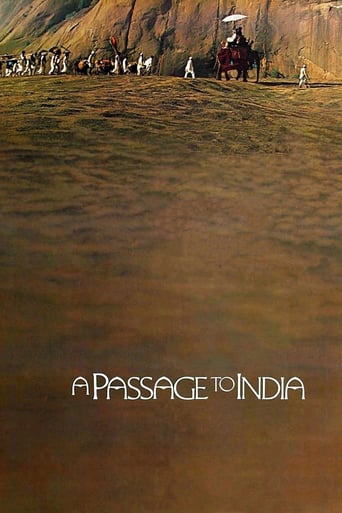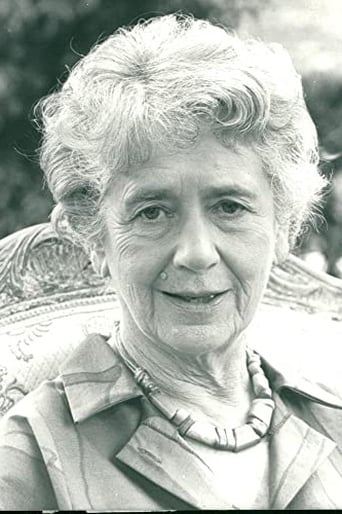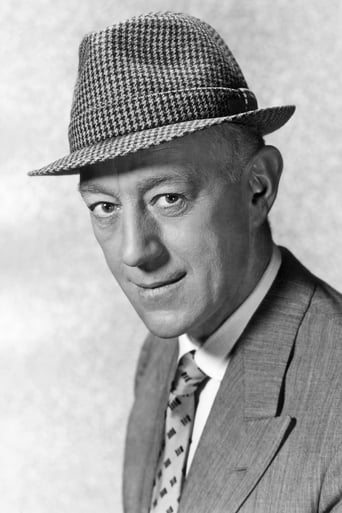disinterested_spectator
This movie is set in India in the 1920s, when India was still a part of the British Empire. The movie itself, however, was produced in 1984, in a postcolonial world, where the collective judgment is that colonialism was simply wrong. In fact, it is regarded as so wrong that little room is left for subtlety or nuance. The Indians are all portrayed as good in one form or another (religious, moral, polite, kind, etc.), while the British are all portrayed as bad in one form or another (rude, inconsiderate, arrogant, bigoted, etc.), with only three exceptions: Adela, Mrs. Moore, and Fielding. Adela and Mrs. Moore are just setting out for India at the beginning of the movie, so they do not share the prejudices of the British that have been in India for a while. Dr. Aziz makes this explicitly clear when, after he and his friend are almost run over by an automobile full of British citizens, he says that all Englishmen become unpleasant within two years of coming to India, while he gives Englishwomen only six months.Fielding is a special case. He has been in India for some time, and yet he retains his good qualities, being friendly with Indians and treating them with respect. That is so we have someone to identify with. You see, we all like to flatter ourselves that had we lived in some other time and place, we would somehow still have our American, twenty-first century values and sensibilities, and that we would have been moral heroes, refusing to go along with the norms and mores of that place and time. In other words, we are sure that had we been a British subject assigned to a post in India in the early twentieth century, we would have been just like Fielding, refusing to go along with our white countryman in their condemnation of an Indian (Dr. Aziz) who has been charged with attempted rape of a white woman (Adela). Without Fielding to identify with, we would have been adrift.Adela goes bicycle riding by herself, and she decides to explore a seldom used path. It takes her to an abandoned building adorned by sculptures of men and women making love. And here we can detect an obvious Freudian influence. The sculptures arouse repressed sexual desires in Adela that distress her greatly. Then she notices a bunch of monkeys looking at her. Agitated, they start to chase her and she runs away. The monkeys represent her animal passions, and what she is really running away from is her own lust. On a previous evening, she had broken off her engagement with her fiancé, but upon returning, she tells him she has changed her mind and wants to get married. In other words, even though she no longer loves him, she figures it is better to marry than burn. Other Freudian symbolism consists of Aziz having a fever and the sweltering heat of the sun, which are suggestive of sexual heat.When Adela and Mrs. Moore, Adela's prospective future mother-in-law, first arrived in India, they wanted to meet some Indians socially. They got no help in this regard from the British people that lived in India, who were appalled at the idea, but Aziz accidentally made the acquaintance of Mrs. Moore and through her Adela. He is so enamored of them that he invites them to a picnic in which they can visit some mysterious caves. Through one incredible coincidence after another, one by one, many of the people who were invited are eliminated: Fielding arrives too late, a chaperon arranged by Adela's fiancé is dismissed by her, and Mrs. Moore becomes fatigued and remains behind, so that only Aziz, Adela, and a guide arrive at some caves.Aziz runs off to smoke a cigarette. This is nothing but a contrivance, the movie's way of allowing Adela to be alone. She enters a cave by herself. The cave, of course, represents her unconscious. When Aziz finishes his cigarette, he goes looking for her. He stands at the entrance to the cave as if about to enter. Now the cave represents her vagina. She becomes overwhelmed with her forbidden lust for Aziz and bolts, eventually falling down the hillside into some cactus. Just as she was really running from her sexual desires when she ran from the monkeys, so too here she runs from her desire for Aziz and not from Aziz himself. Being hysterical, she so vividly imagines being ravished by Aziz that she believes he actually assaulted her. As a result, charges are brought against Aziz.Every white person thinks Aziz is guilty except Mrs. Moore, who says there is nothing she can do and returns to England (dying on the way), and Fielding, who asserts Aziz's innocence. Adela's fiancé is a judge, but he has to recuse himself. He is replaced by an Indian judge. During the trial, much is made of the fact that Aziz is a widower and therefore deprived of a sexual outlet, except for his occasional visits to brothels or his collection of girlie magazines. Needless to say, nothing similar is said about Adela's being a maiden who is also deprived of a sexual outlet. When Adela is put on the witness stand, she recants her previous testimony, and Aziz is acquitted. At this point, we realize why the judge had to be an Indian. If Aziz had gotten a fair trial from a white judge, this would have been out of keeping with the movie's simplistic formulation: Indians good; British bad.So, as usually happens in a movie in which a man of color is accused of raping a white woman, he turns out to be innocent because the woman is to blame somehow: either the woman lied, was hysterical, or behaved in provocative manner. See, as examples, "Sergeant Rutledge" (1960), "To Kill a Mockingbird" (1962), and "Judge Horton and the Scottsboro Boys" (1976).
Mr Black
It's been quite some time since I've seen this film but finally got it out for another look. The word I can best use to describe it is "Splendid" Considering it was made in 1984, it's really hard to believe. The setting, costumes, and style of speaking really has you believing this film was shot in the 1930s or 40's. But that is the style of David Lean. From the story line, direction, and style of filming, this is definitely a David Lean film. A lot of people may not like it because of it's old fashioned style, but it is indeed a splendid film. No bombs, no special effects, no dismembered limbs, just a story told on film. Splendid.!
blanche-2
1984's "A Passage to India" is a visually stunning film and a haunting story of the clash of two cultures. Based on E.M. Forster's novel, it takes place in late '20s India, under British rule. Two British women, Mrs. Moore (Dame Peggy Ashcroft) and Adela Quested (Judy Davis), travel there, Mrs. Moore to see her magistrate son (Nigel Havers), who is engaged to Adela.They want to see the country and meet the Indian people and are frankly surprised that there isn't more mixing of the cultures and people. One night, while visiting a mosque, Mrs. Moore meets the friendly, westernized Dr. Aziz. He invites her and Adela on an outing to the Malabar caves. While there, an incident occurs which becomes a cause celebre and divides the already divided British and Indian cultures.David Lean's film is fascinating on many levels: The breathtaking way he captures the atmosphere of India as well as the period, the magnificent cinematography, and the examination of the beliefs and mores of the time.Judy Davis gives a brilliant performance as the sexually-repressed Adela, who becomes frightened of her awakening feelings just as she vacillates about her coming marriage. She is matched by Victor Banerjee as Dr. Aziz, an attractive, friendly man whose life becomes a nightmare. Peggy Ashcroft gives a beautiful performance as the evolved Mrs. Moore. James Fox and Alec Guinness (in a role which was largely cut) round out the excellent cast.David Lean was one of the world's greatest filmmakers, capable of sweeping epics like Lawrence of Arabia and intimate stories such as Brief Encounter. He has inspired filmmakers such as Steven Spielberg, and his reputation as a true artist is richly deserved. Known for his acute sense of time and place, A Passage to India is another example of his talent and will not disappoint.






